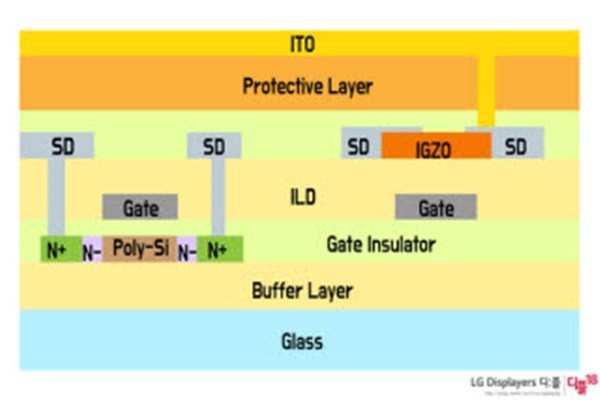| An important technology change in smartphone displays is on the forecast as “LTPO-TFT”, which is seen as the next-generation low-power display, is set to be commercialized soon.
According to the industry, it is heard that Samsung Display is working on an OLED panel applied with low-temperature polycrystalline oxide (LTPO) thin-film transistor (TFT) technology hoping to supply it to Samsung Electronics for Galaxy Note 20 (tentative name) that is scheduled to be released in this second half.
Samsung Electronics is planning to apply LTPO display to the highest model of Galaxy Note series. It is heard that Apple is also working on development of LTPO display in order to apply it to its next iPhones.
“It is expected that Apple will launch LTPO-based iPhone in 2021.” said a representative for the industry.
TFT technology for displays can be divided largely by a-Si (amorphous silicon), LTPS (Low-Temperature Polycrystalline Silicon), and oxide. A-Si is mostly used for large and small LCDs while LTPS and oxide are used for smartphone panels and laptop, tablet, and large TV panels respectively.
LTPO combines LTPS’ electric charge mobility and high stability and oxide’s excellent TFT uniformity and low current leakage. It is designed so that both LTPS and oxide are placed on a pixel and uses LTPS and oxide for operation of display and switching respectively.
LTPO is seen as a technology that can reduce energy consumption for mobile devices. Energy consumption is rising for smartphones as more of them use 5G network and are now equipped with high-performance parts.
 <Structure of LTPO (Reference: LG Display)> <Structure of LTPO (Reference: LG Display)>Although battery capacity needs to be increased in order to accommodate higher energy consumption, increasing battery capacity without any preparation can impede smartphone design. Increased battery volume will make it difficult to install other parts and hurt overall design.
Because LTPO technology does not require higher battery capacity or increased battery volume in order to increase battery life, it can satisfy many needs from the smartphone industry.
It is heard that LTPO can reduce energy consumption by 5 to 15%. This means that a smartphone can last between 90 and 100 hours.
According to relevant industries, Apple requested development of LTPO from Samsung Display and LG Display, which are two leading display makers, in 2015.
Although they had had hard time developing the LTPO technology due to a high degree of technology difficulty of the technology, the technology was first applied to Apple Watch 4 after consistent efforts in R&D. Samsung Electronics’ Galaxy Watch 2 was also applied with the technology.
The display industry believes that LTPO-TFT can be a new factor that can separate a company from others within the global small and OLED market. Just like how Samsung Display is separating itself from others by securing a touch-integrated flexible OLED technology called “Y-OCTA”, LTPO-TFT can also be a technology that can separate one from its competitors.
It is heard that the LTPO technology causes higher financial burden as it requires complicated production and increased number of processes. It is expected that competitive edge in production yield and production in addition to the technology itself will be important keys to separating one company from others.
Staff Reporter Yun, Geonil | benyun@etnews.com
<Source: Etnews> |